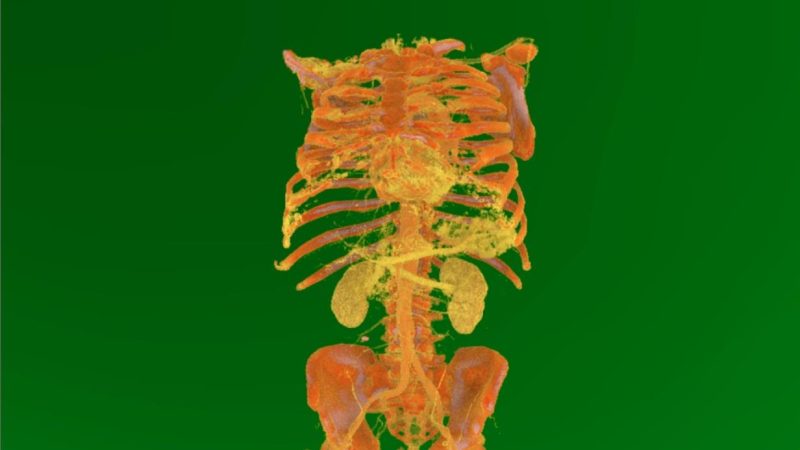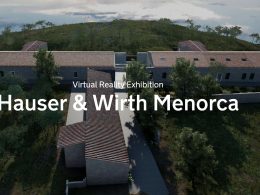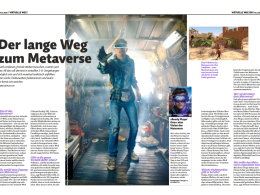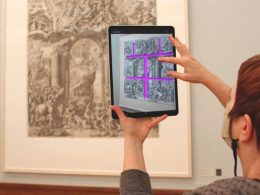Surgeons at Basel University Hospital prepare for real operations in virtual space. The developers of the technology required for this provide insights into this and other achievements of modern medicine at the Basel Pharmacy Museum.
The technology developed at the University Hospital and the University of Basel was used for the first time worldwide in 2017: surgeons used a virtual 3D image to prepare for the operation on a patient with ankylosing spondylitis - an ossification of the spine. With the help of virtual reality goggles, they were able to immerse themselves deep inside their patient's body and view the surgical site in detail from all sides.
Laypeople can now do this too. In the interactive exhibition "Moving insights. Medicine in the fourth dimension" at the Basel Pharmacy Museum, researchers from the Department of Biomedical Engineering at the Faculty of Medicine are presenting their developments. "We want to step down from the ivory tower and make our research accessible to laypeople," said Philippe Cattin, head of the institute, at a preview of the exhibition on Tuesday.
Targeted combating of tumours
Work on virtual 3D models is now routine, especially in neurosurgery and orthopaedic spinal surgery, said the exhibition organisers. Another new medical technology development presented in the exhibition is still in the early stages of practical application.
It is a massively refined control of ultrasound waves for the targeted destruction of cancer tumours. The researchers in Basel have developed pads equipped with 1420 tiny loudspeakers. This allows the sound waves to be precisely focussed. The researchers describe the fact that even small tumour movements triggered by the patient's breathing can be taken into account as a major innovation.
In the exhibition, the fine, inaudible but perceptible ultrasonic waves can be experienced on a model with around 150 loudspeakers. The pad "bombards" the palm of the hand with different geometric patterns.
Innovation of the past and present
The exhibition with these and other achievements of modern medicine is housed in two approximately one hundred year old laboratory rooms attached to the museum in the former pharmaceutical institute of the university.
However, the history of the building goes back much further. In the 16th century, Andreas Vesal, the founder of modern anatomy, dissected his first corpses there. The exhibition described this as a fascinating link between the medical innovation of the past and the rapid development of the present.
Source: Volksblatt









